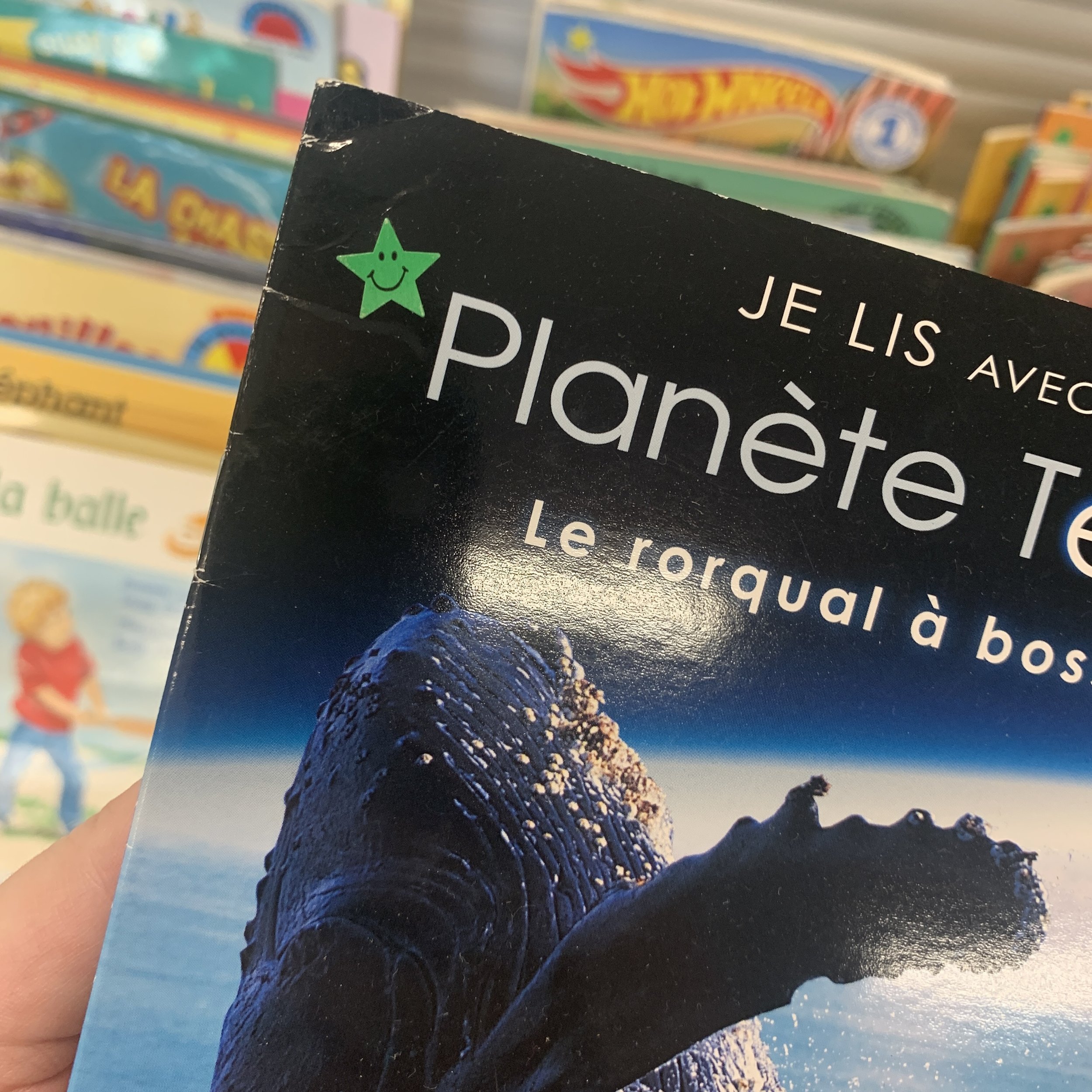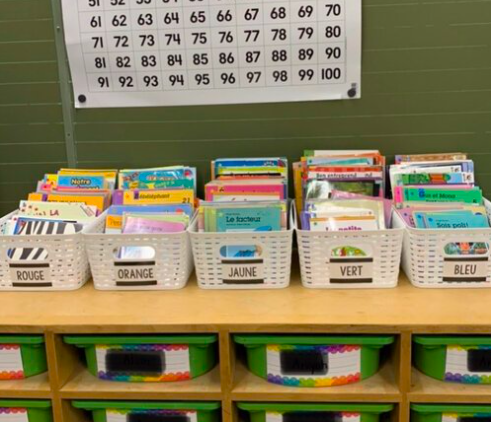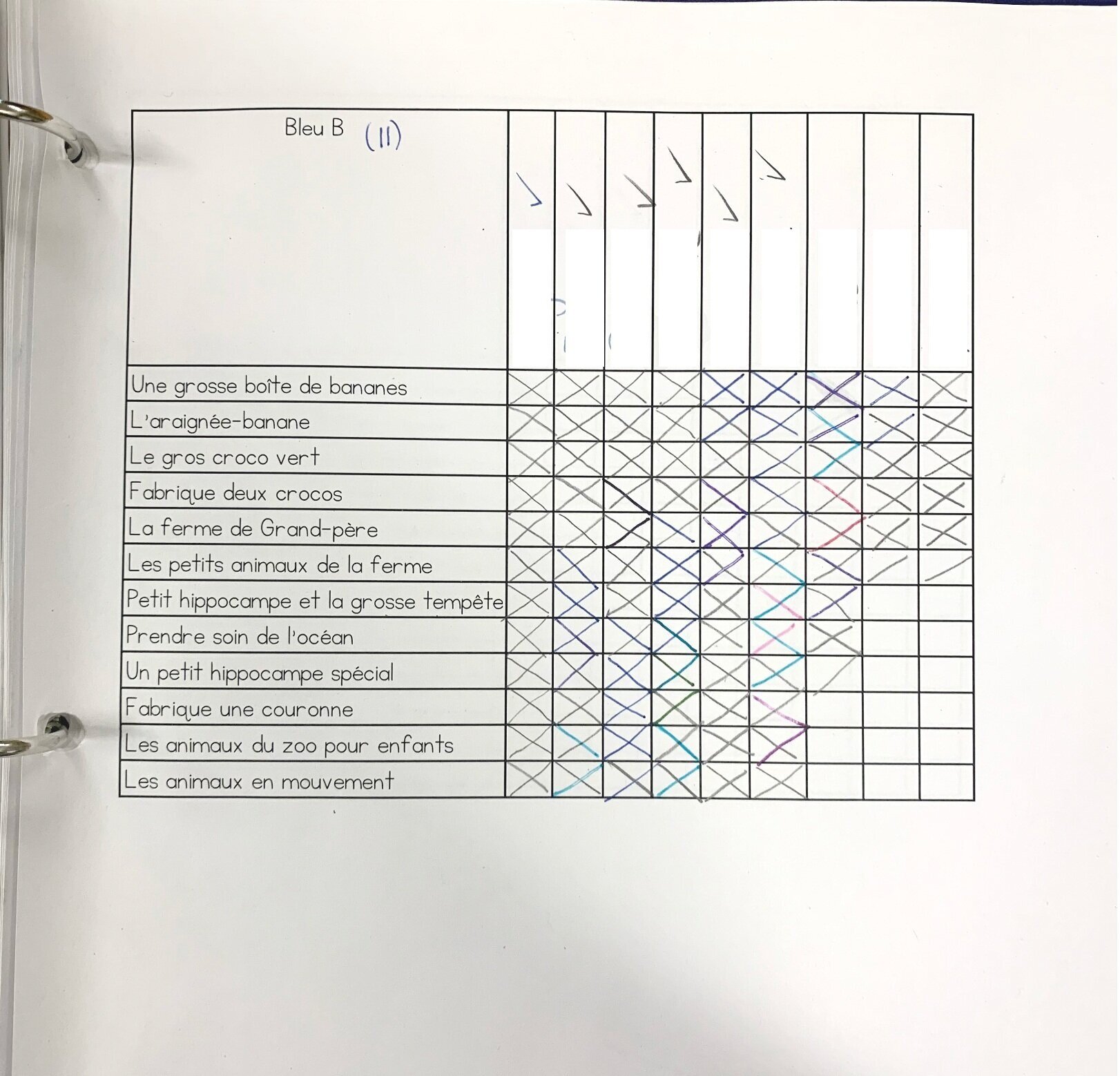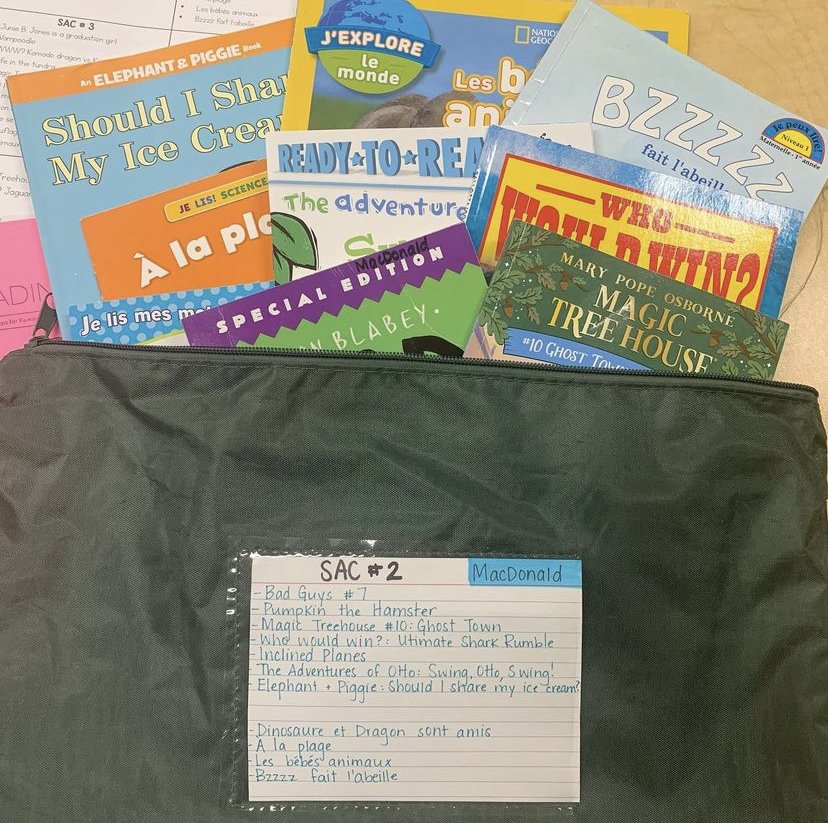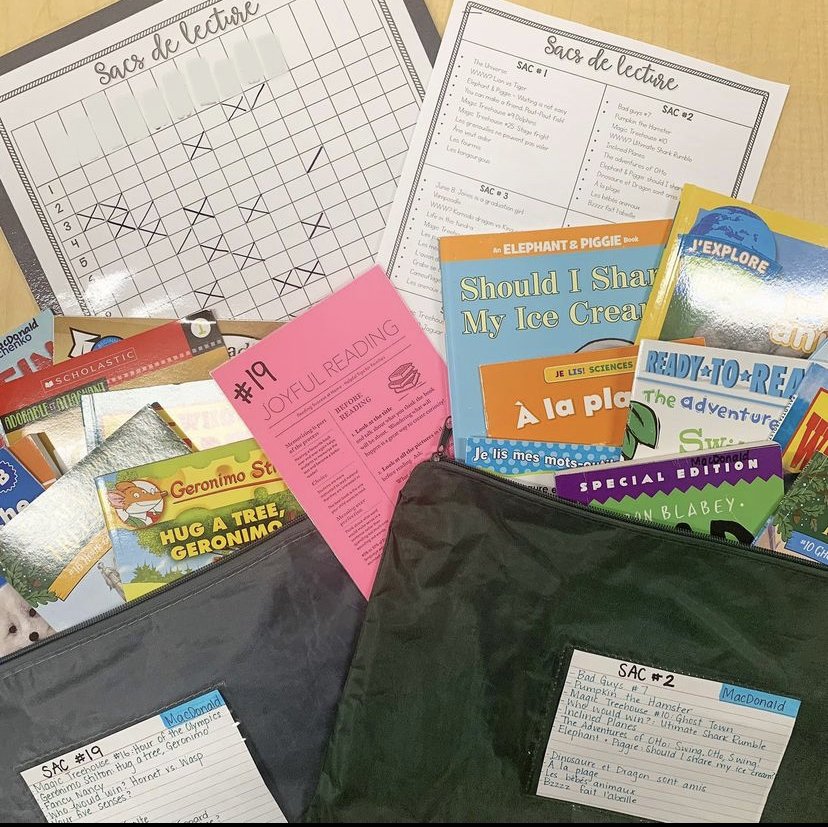Individual Reading: An Alternative to Guided Reading
Many, many teachers do guided or group reading. I don’t. It just doesn’t work for me.
If it doesn’t work for you too, maybe it’s time to try a new system? Keep reading to see how I do individual reading instead.
Why I don’t do guided reading
The first year I taught grade 2/3 I was trying to figure out how to actually do this reading thing. The benchmark levels in my class ranged from about 1-20 and it just didn’t make sense in my head to do guided reading when I couldn’t group students together well enough to make it worth while. I tried for a while with grouping students with similar levels and needs/strengths but I found that there were always those who would overpower and those who didn’t feel so comfortable in a group. I also had a needy class who weren’t great at being independent so it was hard to focus on a group when everyone else needed so much.
Instead, I read individually with every student!
Yes…I know, every student individually sounds a little crazy. The idea is that I read with as many students per day as I can and you know what, it ends up being at least 2-3 times per week and that’s what they’d be getting in most guided reading rotations. This way they get directed support.
There have been very VERY few times that I’ve read with all 22 in one day. My colleague who teaches 1/2 manages that feat a lot more frequently but her students also read much shorter books than mine. More often, I read with 10 or so students each day. So, how many you get through will depend.
What about English reading (for those who get ELA)?
ALL students read with Madame in French.
Only students who are not yet meeting in English read with Madame. They follow the same process outlined below. They have a book in their bag and they read it with me. For students with both languages, I alternate between reading in French and reading in English, as I don’t have time to do two full books with all of them. I note on my tracking sheet a little E or F in this case so I remember for the next time we read.
When do I read with them?
ALL THE TIME! It’s never on my day plan though. This means I pull students to read with me constantly throughout the day. Basically any moment I can. The most common times for me to pull are during morning work, silent reading, during art or other very independent tasks, catch up periods and play centres (on days we do them). I also know who finishes work quickly and I will pull them after they’re done their math, for example.
There are some days that I read with a maybe handful of students or maybe even none and that’s fine! Our days are busy and things come up like special events, presentations and needing to shift your lesson plans around. Generally it’s 10 students per day.
What does individual reading look like?
I expect to read with my students about 3 times per week so if they return their book every other day or so, they’re just fine. Some return their books daily and that’s also fine. I don’t have a set day that they return them, they return them when ready but if it a student is not returning, I will follow up with their adult.
On the day they bring their book bag, they put it in my green tub by my desk. When I have those free moments during the day, I go into my bin and pull out bags and call the student over to my desk. I always prioritize those who didn’t read yesterday. So if I have a student who returns every day, I make sure to read with those who don’t first, before getting to that daily student.
We read their book together and work on what that student needs to work on. I will ask them questions, make predictions, summarize the story in their own words, identify things in the images, make connections etc. All those things you’d be working on in guided reading, I just do it individually. This makes it so much easier when I know student A is great at using visual cues but needs to work on predictions or student B needs to smooth out their fluency. This also makes it easy to work on things like pronunciation and fluidity with students as it’s just the two of us and I can help them correct and improve on specifics.
Then, if it has gone well, they return that book and they get a new one to take home in their bag. If the book still needs work, I’ll send it home again, sometimes with a sticky note about what needs to be worked on.
When I am reading with a student, the others know that it is a “don’t bug Madame unless it’s an emergency” type thing. We have a hand signal for going to the washroom so they can tell me without interrupting. They also know that they shouldn’t be hanging around my desk because the student I’m working with may feel uncomfortable if their peers are listening to them.
How long do I spend with each student?
I’d say an average of 5 minutes. Some are shorter, some are longer. It depends on the student and their ability, their fluency speed, amount of support or questions involved, disruptions…
My students typically have longer books in grade 3, especially for those who are meeting grade level expectations. We usually read half the book at a time. I would be there ALL day if I read the entire book with every child. If you are reading with emergent readers though, you can do the whole book as the amount of text is considerably less.
But what about interruptions?
Have you been in a classroom lately? There are ALWAYS interruptions!
The key here is that I don’t wait for perfect moments. I also multi-task a ton. Do I give 100% attention to the reader? Nope, I can’t. I am the only adult in the room and my attention gets pulled in a lot of directions. The reader works on the left side of my desk and the right side of my desk acts as a drive-thru. Quick service! Need an agenda signed? Need to hand me that form your mom signed? Need a band-aid? Need me to check that you’re doing your math right? Sure. Obviously I try to avoid spending too much time turned away from the reader, but I don’t have a choice. One adult, remember!
Sometimes I do need to stop the student to deal with a problem that isn’t so “quick service”. Most times though I can signal quietly that I will help whoever is in need in a minute and then they go back to their desk. I’ll go over to them as soon as I’m finished reading with that other student.
Think of it this way, if you did guided reading, even with a “don’t bug us” rule, kids still bug you! They get too loud, they get off task, they come up to you and interrupt, they have problems, and you have to be able to deal with it all at once.
What books do I use?
This year:
This year I am using Décode, Une Syllabe à la Fois and Foxy & Friends (Renardo) books. Une syllabe are not for true beginners, so I have some students reading either Décode (for my true beginners) and the Foxy books as they are much simpler. For Une Syllabe, I like that there are two options in the book. The story is in there twice. First it has coloured text that helps students decode the words. At the back there’s the same story but with black text. I like that the student can choose which side they want to read. At the back there are comprehension questions too!
Suggested French book series
Early primary - Décode, Facile à lire, Escalire (early levels)
Upper primary - Une syllabe à la fois, Renardo, Escalire (more advanced levels)
*Of course, you can use any series that suits your students. I have students who have different needs and read different books than their peers.
For English, I’ve been using a series called SyllaSense.
Some things I’ve used in the past before I received money to purchase new books:
Home reading cart:
Our school has a home reading book cart which has French books in levelled bins.
If you don’t want students knowing which level they are, maybe the coloured system is better (see below). Honestly my students knew they had a number but they don’t actually know how that ranks them. I never had issues with students making a big deal about it to their friends and comparing. Sometimes they’re proud that they get to move up and will tell a friend but it’s not in a gloating way. If it was, I would have a private conversation with them.
Colour bins:
I used all these levelled books that I had inherited from other teachers. There is a huge mix of older and newer levelled readers. Everything from GB+ to Colorissimo to Planète Terre to Ben Entreprend to ones so old they’re likely not in print anymore! I didn’t have enough of each level to separate them all that way. Instead, I made 5 colour groupings with similar levels. This means that students may find a book more or less challenging, even though it’s in their colour.
The students are assigned a colour and they may choose any book in that basket. There is also a coloured sticker in the corner of every book in case it gets misplaced. As a student improves, they will move up to the next coloured basket.
Online reading program - Je Lis, je lis, littératie!
When we had to shift to distance learning, we started an online program called Je Lis, je lis, littératie! This is a PAID program and my school paid for a license for French teachers. It has a ton of books for every level and includes questions you can ask students as you read. If you’re interested in seeing how it correlated to other reading programs, see the chart HERE.
When we returned to school, we kept up with the online reading to not have to swap books and it meant that students never lost a book. Unfortunately I found that I didn’t have great buy in with this and students were not reading.
How I organize my home reading books
I store the books in these book bins beside my desk (where I read with students). The grey ones are French. The coloured ones are English.
I write the number it is within the series on the corner of the book. This makes it super easy for me to find the book I need when I flip through, without having to see the titles.
They are staggered in sections based on level and book type. It may not make sense to you looking at it, but it makes sense to me based on the order in which I choose to have my students read. Organize them however you want!
Book Bags
These are their book bags. I purchased them on Amazon, they’re A4 size (letter size) as I have some larger books that wouldn’t fit in smaller bags.
You can use anything, even plastic Ziploc bags (though you may need to refresh them throughout the year as they can rip). I like that these are reusable and hold up so well even with daily use.
I do suggest something waterproof as we’ve had way too many water bottle accidents to count and want to protect our books as best we can.
Some students just have one French book but others have that plus an English book, sound cards etc. It depends on the student.
Keeping track of it all!
When they read:
I have a sheet like this on a clipboard and use that to keep track of who reads when. It gives me a quick visual to see who needs to be read with that day.
For students who have English and French books, I make note of which they read with a little E or F next to the check. If the student has a check only, it’s because they only read in French.
You’ll notice that some students have an E and F on the same day. This is typical of my very emergent readers because as mentioned earlier, their books are much shorter. Since they are in need of more support, I try to do both languages with them to get more practice in, rather than alternating like others.
What they read:
I made an inventory of all the books in each series and put them in a chart. You can find free inventory lists for several series in the files section (see top bar of website).
There is a space for names up at the top. When a student is working on a book, there is a single line across that book. Once they have completed that book, I make another line, creating an X. Since students move at different paces, this is an easy way to find who is working on which book.
When they read through all the books in that series, they are often ready to move up to the next. Sometimes I will jump students if they suddenly advance. It’s all very fluid and flexible depending on student needs.
Below is an example of what it looked like when I did Je Lis (online reading).
Personal tracking:
Each student has one of these trackers in their bag. I give them a check each time they read with me. My students work towards choosing a vinyl sticker, but if you don’t want to make it reward based, you can just have it to show parents that you’re reading with students. You can download this free sheet in my Google Drive folder (see “files” at the top of my website).
You could use this as a home reading log instead but personally I don’t really like home logs. I find parents often feel pressure to fill it out and will lie and say they did it. So, I use it as a reading with Madame log that they can keep with them to see how much they’re reading.
OTHER OPTIONS FOR HOME READING
Multi-book home reading
If you don’t plan to use the same books for home reading and in class reading with you, you could send home several books at once and have students do a swap day once per week. If you have a whole class swap day, I suggest choosing the same day as your library day so that families know all books are returned on the same day each week. I do this for my recreational home reading bags (see below for more info). To avoid chaos when exchanging books, have table groups or other small groups come up to swap and rotate through.
Recreational Home Reading Bags
This is a program that my district offers. They are mystery bags full of multi-level, high interest books with something for everyone. This is an optional program in addition to my required home reading, so many families opt not to participate and that’s fine! For those who do, they get a new bag on Tuesday (for example), and keep it until the following Tuesday. Because these books are multi-level, every student won’t necessarily be able to read every book, and that’s fine! Even if you can read it, doesn’t mean you have to, it’s all just for fun reading.
I teach French Immersion but I will never stop you reading in another language. I also teach grade 3 which, in my district, is the beginning of some English instruction. In addition, this is EXTRA reading, they already have French reading with their home reading book.
To keep track of who has which bag and which bags they’ve already had, I use a chart similar to how I track my other home reading books. / when they have it, X when it’s returned.
Each bag has a card with the book titles so they know to make sure all those are back before returning. I also have a master list of what’s in each bag should anything get lost.









